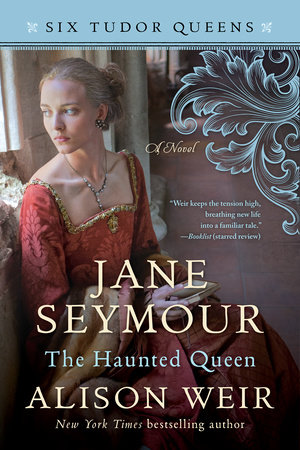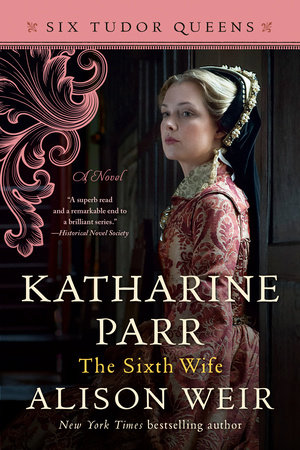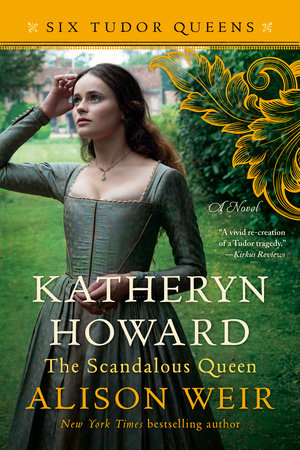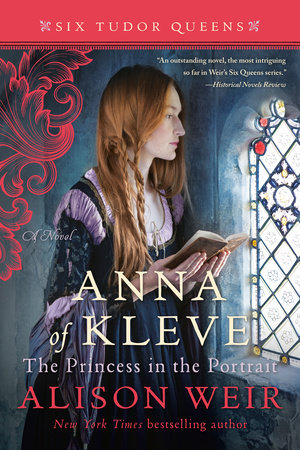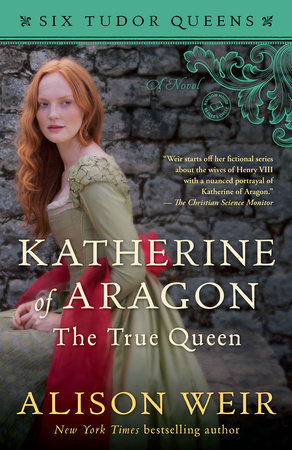Excerpt
Jane Seymour, The Haunted Queen
Chapter 1
1518
“A health to the bride!” Sir John Seymour smiled and raised his goblet as the company echoed his toast.
Jane sipped her wine, watching as her new sister-in-law blushed prettily. Edward seemed besotted with his new wife. At seventeen, Catherine was a very comely girl, a year younger than he. Jane had been surprised at how practiced she was at the art of coquetry, and how warmly the men were looking at her. Even Father seemed to be under her spell. Catherine’s father, Sir William Fillol, was leaning back in his chair replete, looking well pleased with the match—as he should be, for Edward, being Father’s heir, had good prospects and the determination to do well. Even at the age of ten, Jane knew that for an ambitious young man, marriage to the well-bred co-heiress of a wealthy landowner would be a great advantage.
Sir William had been boasting of how the Fillols could trace their ancestry back to one of the companions of the Conqueror.
“And we Seymours too!” Father had countered smugly, sure of his own exalted place in the world.
All in all, it was a most satisfactory union, and worthy of this great feast. The long tables in the Broad Chamber of Wulfhall were laden with extravagant dishes, all prepared under the watchful eye of Lady Seymour herself. Meat and fowl of every kind graced the board, the centerpiece being a magnificent roasted peacock re-dressed in all its glorious plumage. Sir John had provided the best wine from Bordeaux, and everyone was attired in the new finery they had worn for the wedding.
Sir William normally resided less than fifty miles away from Wulfhall, at Woodlands, near Wimborne, but he had opened up Fillol’s Hall for the wedding, and Jane’s whole family—her mother and father, and all their seven children—had traveled to Essex to be present. Father was so delighted with his new daughter-in-law that he had insisted that Sir William and Lady Dorothy accompany Catherine when Edward brought her back to Wulfhall to continue their celebrations. That had sent Mother into a flurry of preparation, and everyone agreed that she had risen to the occasion splendidly.
It was dusk now, and candles were being lit on the mantelpiece and windowsills, their flickering, dancing flames reflected in the diamond-paned glass in the stone windows. As Jane observed Edward and Catherine conversing together and stealing the odd kiss, it came to her that in a little over eighteen months she herself would be of an age to be wed. Fortunately, there was no sign that Father had any plans as yet.
For Jane had no desire to be married. She wanted to be a nun. Everyone teased her for it, not taking her seriously. Let them. Soon they would find out that she was as determined as her brother Edward when it came to getting what she wanted in life. She could not imagine her hearty, jovial father objecting, nor her adored mother. They knew of the dream she had had of herself wearing a nun’s veil, kneeling before Our Lady. It had visited her a year before, on the night after her parents had taken them all to visit the shrine of St. Melor at Amesbury Priory. She had been overawed by the great church with its soaring octagonal steeple, and had prayed devoutly at the altar of the murdered boy-prince, kneeling beside her siblings with her hands pressed together, as she had been taught from infancy.
Since then, she had been certain that her future lay within those twelve holy acres. She could see herself singing the offices in the choir with the sisters, gathering apples in the orchard or fishing in the ponds, dedicated to God and manual labor for all her life. Next year she would be old enough to enter Amesbury as a novice.
For now, she was content to be with her family, laughing at the jests at table, enjoying the good fare spread out before her and sparring with her brother Thomas, less than a year her junior, who was at this moment throwing sugar plums at the newlyweds. Mother frowned.
“Catherine, you must forgive my youngest son,” she said. “He never knows when to desist. Tom, stop that.”
“Such high spirits will take the lad far,” Sir William observed indulgently. His wife sniffed.
“He’s a menace,” Edward said, not smiling. Jane heard her mother sigh. Edward had no time for his youngest brother, and always treated him as a nuisance. And Thomas was adept at riling him, utterly resolved never to be outshone by Edward. It was an unequal struggle, for Edward was the heir and Thomas’s senior by eight years. He would always have first bite of the apple. When Jane was six, he had been sent to France as a page of honor in the train of the King’s sister, the Princess Mary, when she married King Louis, and the following year he had gone up to university at both Oxford and Cambridge, and thence to court, making himself useful to King Henry and his chief minister, Cardinal Wolsey, whom many asserted was the true ruler of the realm.
It was hot in the Broad Chamber. Despite it being high summer, Mother had insisted on having the fire in the hearth kindled, in case anyone felt a chill. Jane pulled off the floral chaplet she was wearing, for the blooms were wilting, and smoothed down her long tresses. They were the color of pale straw, rippling like fine silk over her shoulders. Edward, Thomas, Anthony and the baby Elizabeth were dark-haired, having inherited Father’s coloring, but Jane, Harry and Margery took after Mother.
For a moment Jane felt sad that her beautiful hair would be cut off when she took the veil. It was her only claim to loveliness. Her cheekbones were too rounded, her nose too big, her chin too pointed, her mouth too small, her skin too whitish. Looking around the room at her brothers and her pretty little sister Margery, it came to her, without envy or rancor, that they were all more attractive, more jolly—more vital.
In bearing children, Mother had done her duty as efficiently as she accomplished all her other domestic responsibilities. Before Jane had come along, she had borne five sons, although the eldest, John, whom Jane could barely remember, had died when he was eleven, and another John had died just after birth. Harry and Anthony were cut from different cloth to their brothers: Harry was easygoing and had no ambitions beyond the Wulfhall estate, while Anthony was studious; he would be following Edward to university soon, and there was talk of his pursuing a career in the Church. Jane felt encouraged by that. If her parents could lay up treasure in Heaven by giving a son to God, how much more store they would have in giving a daughter too.
Six-year-old Margery had been allowed to sit up for the feast, but tiny Elizabeth, having been brought in by her nurse to be admired by the guests, was now sound asleep upstairs in what was called the Babies’ Chamber.
It was a teeming household, and a happy one. As Jane looked about her at the large room filled with her merry, feasting family, a sense of well-being and contentment stole over her. Whatever the future brought, she was proud to be a Seymour of Wulfhall.
When Jane was little, she had thought that there must be wolves somewhere at Wulfhall. She had peered around corners and opened closets and cupboards in trepidation, lest one leap out at her. She had lain awake at night fretting about what she would do if she ever encountered one of the beasts. But hearing her screams one day when Thomas had sprung out from the dry larder shouting, “I’m a wolf!” Father, having clouted him for it, had reassured her that the name Wulfhall had nothing to do with wolves.
“It was once called Ulf’s Hall, after the Saxon thane who built it hundreds of years ago,” he explained, taking her on his knee. “Over the years the name has changed a little. Better now, sweeting?” And he had kissed her and set her down to go back to her toys, reassured.
Jane was aware that Wulfhall had been rebuilt and altered several times over the centuries. The present house was about three hundred years old, and it embraced two courtyards—the Little Court, which housed the domestic offices, and the Great Court, where she and her family lived. The lower walls were of ancient mellow stone supporting an upper story of solid timbers framing white plasterwork. You entered through the porch and came into a large hall. At the far end a door led to the smaller Broad Chamber, which the family preferred to the hall, since it was easier to heat. On sunny days, the window panes in the Broad Chamber and the chapel glinted with a thousand lights, and the vivid colors of the armorial glass blazed like jewels. At one corner of the Great Court stood a high tower, a relic of an older house.
Sir John was wealthy, owning extensive lands in the county of Wiltshire, enabling him to build a fashionable long gallery where his family could take exercise on a wet day. Their portraits, limned by itinerant painters who had visited the house looking for work, stared down from its lime-washed walls. Among them was an imaginary likeness of the founder of the Seymours’ fortunes, a Norman knight called William de St. Maur.
Oh, no, thought Jane. Father is going to bore everyone with the family history.
“He arrived with the Conqueror at the time of the Norman invasion of 1066,” Sir John was boasting proudly. “Seymours have served the Crown loyally ever since. We have been farmers and landowners; we have held public offices, and held them well. Some have sat for the shire in Parliament.” He refilled his goblet, warming to his theme; his children had all heard it before, many times. “I was knighted at eighteen, after fighting the Cornish rebels alongside my father. As you know, it was upon the coronation that I was appointed a Knight of the Body to King Henry.”
Sir William nodded. “It’s hard to believe that was ten years ago. All that talk of conquering France, all come to naught.”
Father had fought for the King in a French campaign (and probably exaggerated his exploits, Mother had said more than once behind his back, smiling affectionately).
“In time, in time,” he said now, clearly more interested in impressing his guest with the family’s achievements. “You see that horn on the wall?” He pointed to the great silver-bound ivory hunting horn resting on iron brackets above the fireplace. “I have the honor to bear that as hereditary ranger of Savernake Forest. Look at that line of trees yonder, through the window.” He pointed to the dense woodland on the crest of a gentle hill. “That’s the ancient forest, which stretches all the way west as far as Marlborough, and to Bedwyn Magna, which is our nearest parish.”
Jane anticipated that Father would soon be enlarging on how capable an administrator he had proved since his fighting days were ended, and the diplomatic missions abroad he had undertaken on King Henry’s behalf. Not for nothing was he sheriff of Wiltshire, Dorset and Somerset; not for nothing was he Justice of the Peace for Wiltshire.
But no. “I am content to farm these days,” he said. “You have to be at the forefront of change. I have twelve hundred and seventy acres here at Wulfhall alone, and I’ve converted them all into pasture for sheep.”
Sir William raised his bushy brows. “And you’ve had no trouble? Other gentlemen of my acquaintance who have enclosed their land for sheep have met with violent opposition. Even Sir Thomas More, whom I met at court, says that sheep are eating men. And it’s true. For in growing rich on raising the finest and costliest wool, you noble gentlemen, yes, even men of God, leave no ground for tillage. It has put many a poor man out of work.”
“There has been some grumbling among my tenants,” Father admitted. “But I have made sure that none were left in want, and found them other work to do when they might have faced destitution. Thus, I pride myself, I have retained their love.” Young as she was, Jane knew from her dealings with the people on the estate that Father was well thought of, and Edward said his success at managing his estates was even spoken of at court.
It was growing late, and the balmy late-summer night had covered the land. The men were growing noisier in their cups, and Mother was shooing her younger children off to bed. Catherine was yawning and her father suggested it was time for her to retire. Edward leapt up to accompany her.
Jane rose too and excused herself. It was still hot in the hall, and she was relieved to escape outside for some fresh air.
What she loved best about Wulfhall were the three gardens that immediately surrounded it. She wandered into My Old Lady’s Garden, which faced the house and was named for her Grandmother Seymour, who had been born Elizabeth Darrell and died soon after Jane was born. She had had a passion for growing things, and the garden she had created was gloriously colorful with roses, gillyflowers and pansies in season, as well as pretty shrubs and bushes tamed into the shapes of chess pieces. To the east lay My Young Lady’s Garden, which had always been Mother’s domain. The herb beds she had planted after her marriage were still flourishing, useful for cooking, making medicines and unguents, and sweetening the rushes that carpeted the floors. To the west, there was the Great Paled Garden with its painted picket fence and the wilderness of wildflowers where Jane and her siblings still indulged in their childish romps.


